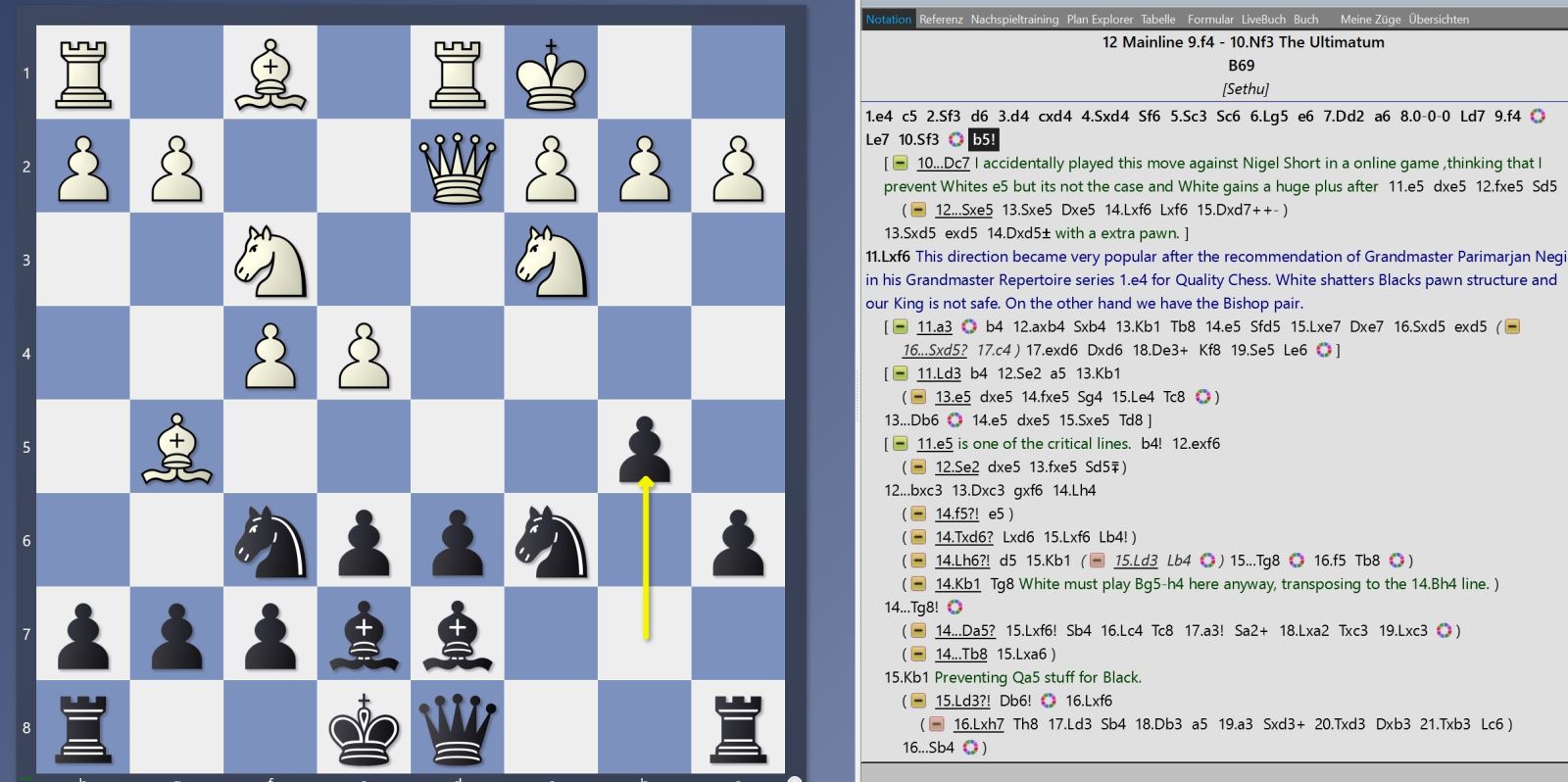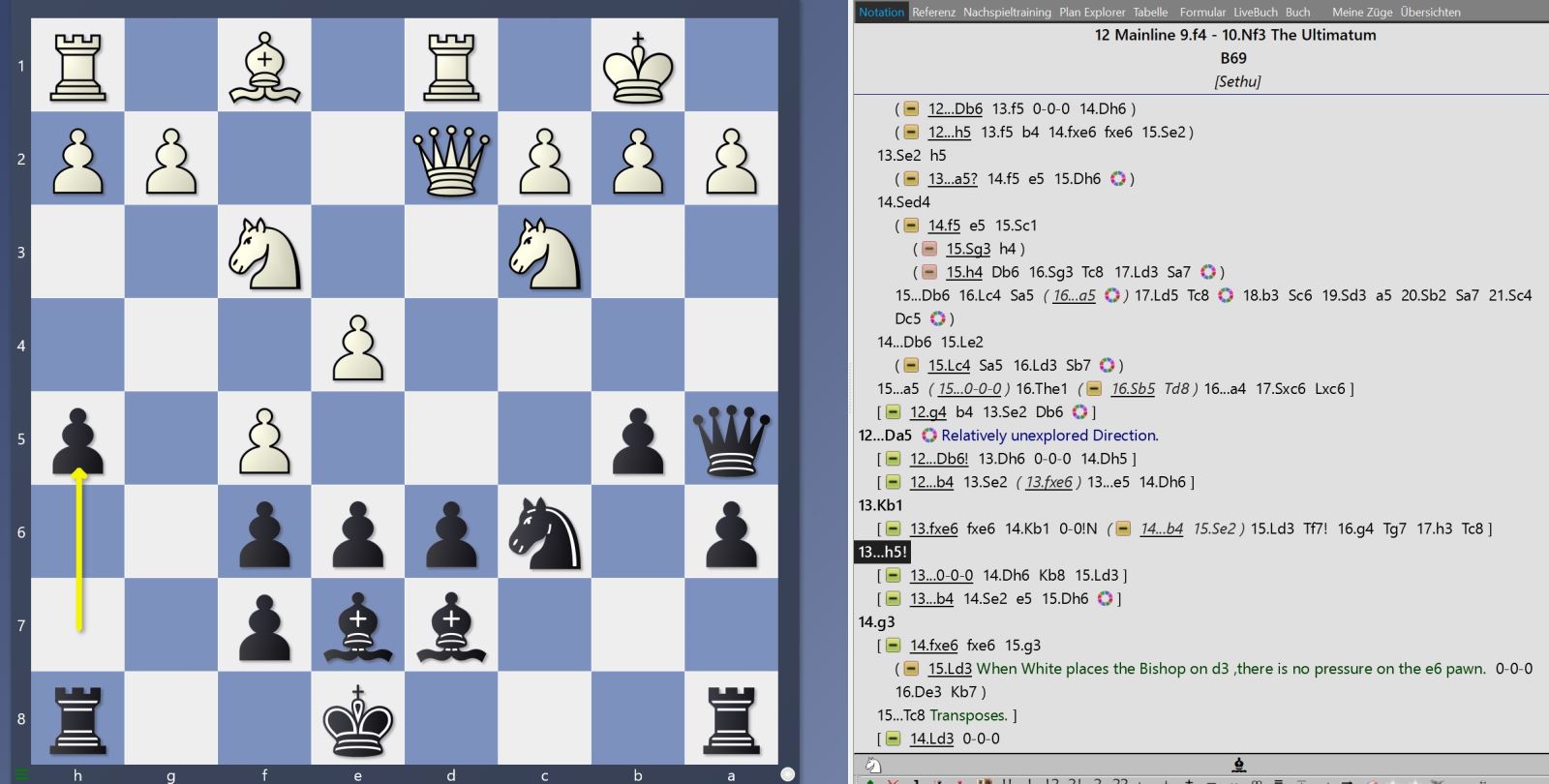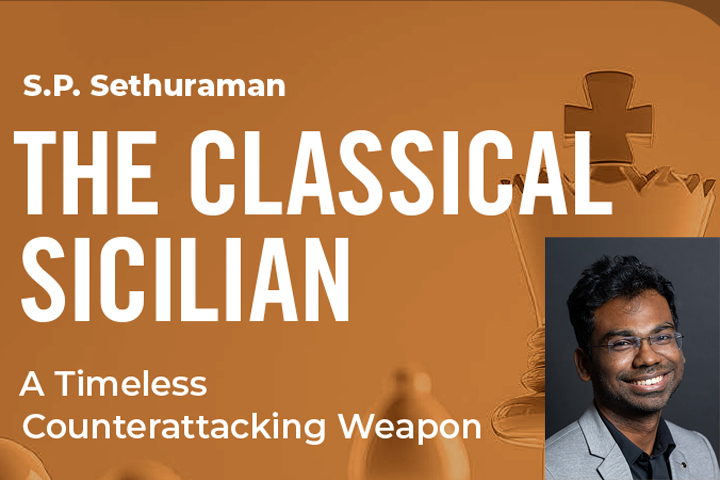The video course begins with an introduction to the basics of the Classical Sicilian (1.e4 c5 2.Nf3 d6 3.d4 cxd4 4.Nxd4 Nf6 5.Nc3 Nc6). Sethuraman emphasises the flexibility of this variation, which can be achieved by two move sequences (2...d6 or 2...Nc6), with the course focusing on 2...d6. Variations leading to the Rossolimo Variation (1.e4 c5 2.Nf3 Nc6 3.Bb5) are not covered.
Strategical concepts
Sethuraman explains strategic concepts such as controlling the centre and preparing attack plans that Black can use in critical positions. He highlights typical pawn structures and shows how Black can create dynamic counterchances, especially in positions with heterogenous castling or the black king in the centre.
Prominent users of the system include former World Champion Vladimir Kramnik in the 1990s and later Boris Gelfand, as well as modern grandmasters such as Parham Maghsoodloo and Sam Shankland. Sethuraman himself plays the opening regularly with success, underscoring his expertise. The course focuses on the critical response 6.Bg5, known as the Richter-Rauser attack, which tends to cause Black the most problems.
An example is the main line, in which it is important to start with ...b5 and not with ...Qc7:

The course also covers other important continuations such as 6.Bc4, 6.f3, 6.Be3, 6.g3 and 6.Be2, with Sethuraman explaining the recommended plans for Black in each case. The main part consists of typical positions with opposite castling and the pawn structure shown below:

This is one of the typical positions with the double f-pawn and the uncastled king. Sethuraman provides a solid overview and basic understanding here, so that you can play these positions in your own tournament games. My personal recommendation is to play training rapid games in these positions to further expand your knowledge. Many of the variations are still unexplored and require a certain feel for the position. In particular, it is possible to maintain a certain flexibility in these complex variations. For example, the move 12...Qb6 is very playable and is considered the main variation.
An example of Sethuraman breaking down complicated long variations in an understandable way is his treatment of the sharp 6.Bc4. Watch the video and listen carefully, especially to the variations with 7.Be3.
Experience as a trainer
I learned a lot from the course that I can use in my coaching. Since I don't have any expertise in open Sicilian positions, I use this course as a foundation for a student with a rating of around 1900. The student is asked to look at the variations, usually following a direction I give them, before the training session. We then play training games, which I also prepare in advance. Afterwards, we analyse the games.
This greatly improved his understanding, enabling him to achieve some good results against stronger opponents using this system in the very next tournament.
Conclusion
"The Classical Sicilian" by SP Sethuraman is an excellent video course for players who want to add a dynamic and flexible opening to their repertoire. With its clear structure, sound analysis and practical tips, the course offers everything you need to play the Classical Sicilian confidently. I recommend studying the system intensively and playing training games before putting it into practice.
Here is model game from the 2025 Prague winner, Aravindh Chithambaram, and here is an overview of further Sicilian video courses.
The course is designed to provide a deep yet practical repertoire for Black, balancing solid foundations with aggressive counterplay.
The Classical Sicilian has stood the test of time as one of the most principled and fighting defences against 1.e4. With its rich history spanning world championship matches and modern elite tournaments, this opening remains a favourite among players who seek a dynamic, counterattacking approach without venturing into extreme theoretical battles like the Najdorf or Sveshnikov.
Free video sample: Introduction
Free video sample: 6.h3

























